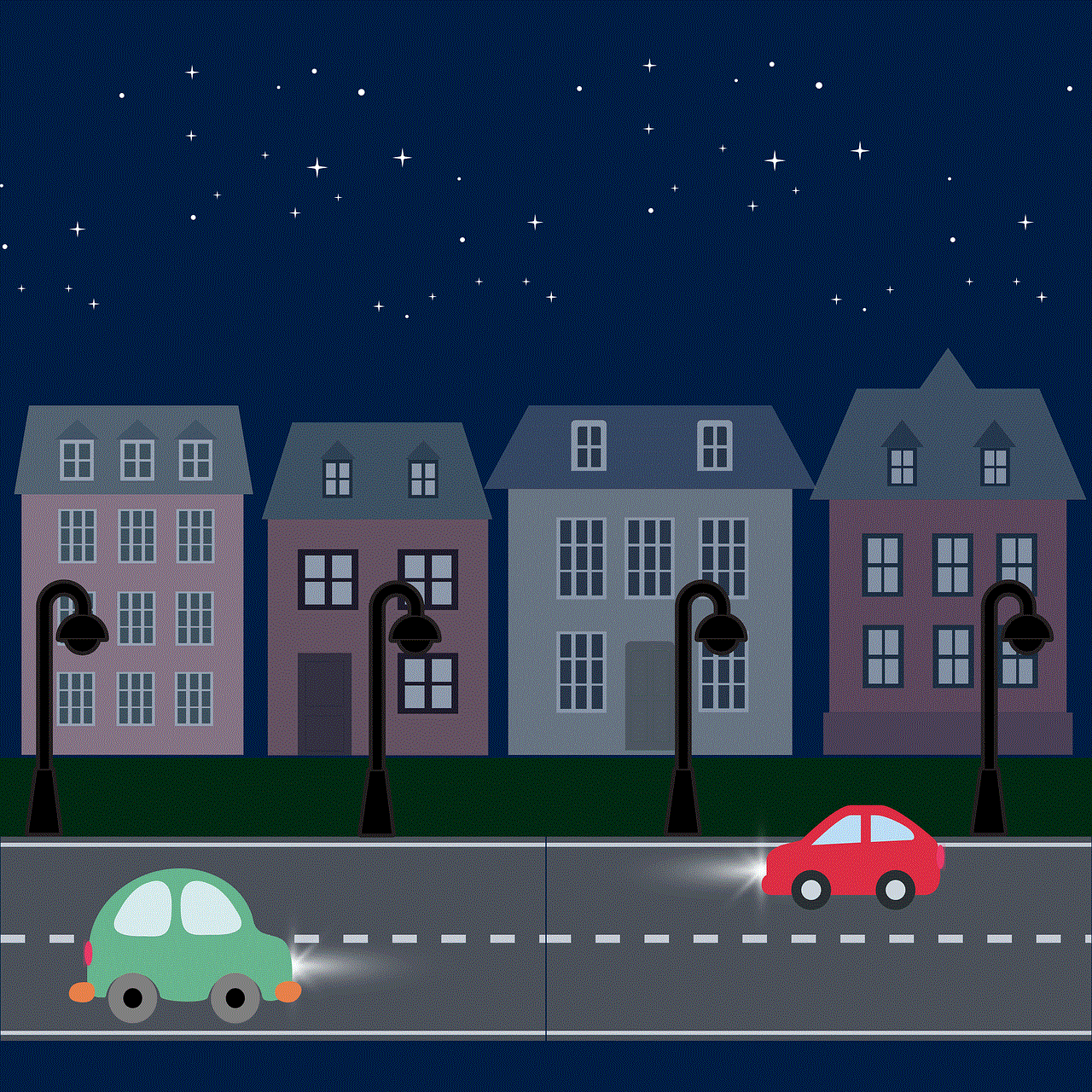security in telecommunications
Security in Telecommunications: Safeguarding the Modern World
Telecommunications, or the transmission of information and communication over long distances, has become an integral part of our daily lives. From phone calls and text messages to internet browsing and social media, we rely heavily on telecommunications to stay connected and informed. However, with the widespread use of technology, the risk of security threats has also increased. The need for security in telecommunications has become more crucial than ever before. In this article, we will explore the challenges of ensuring security in telecommunications and the measures being taken to safeguard the modern world.
The Evolution of Telecommunications
The history of telecommunications dates back to the 19th century with the invention of the telegraph, which allowed the transmission of messages over long distances through a series of electrical signals. This was followed by the telephone in the late 19th century, which revolutionized communication by enabling voice transmission. The 20th century saw the rise of radio and television, further advancing the field of telecommunications. However, it was the invention of the internet in the late 20th century that truly transformed the way we communicate, paving the way for modern telecommunications.
With the advent of the internet, there was a rapid advancement in technology, leading to the development of smartphones, laptops, and other devices that allowed for easy and instant access to information and communication. The convergence of these technologies has resulted in a highly interconnected world, with data and communication being transmitted at lightning speed. However, with this increased connectivity comes the risk of security threats, making the protection of telecommunications networks and data a top priority.
The Importance of Security in Telecommunications
In today’s digital age, almost everything we do involves some form of telecommunications. From online banking and shopping to healthcare and government services, our personal and sensitive information is transmitted over telecommunications networks. Any breach in these networks can have severe consequences, ranging from identity theft and financial fraud to cyber attacks and national security threats. Therefore, ensuring the security of telecommunications is crucial to protect our personal data and the functioning of our society and economy.
Challenges in Ensuring Security in Telecommunications
One of the main challenges in securing telecommunications is the constantly evolving nature of technology. As new technologies emerge, so do new security threats. Hackers and cybercriminals are constantly finding new ways to exploit vulnerabilities in telecommunications networks, making it a never-ending battle to keep up with the ever-changing landscape of security threats. This challenge is further compounded by the fact that telecommunications networks are often interconnected, making it difficult to secure all points of access.
Another major challenge is the sheer volume and diversity of data being transmitted over telecommunications networks. With the rise of the internet of things (IoT), there is an increasing number of devices connected to telecommunications networks, further increasing the potential attack surface for hackers. Moreover, the amount of data being transmitted is growing exponentially, making it difficult to monitor and protect all the information being transmitted.
Additionally, the global nature of telecommunications presents a unique challenge in terms of security. As data and communication are transmitted across borders, different countries may have varying security regulations and standards, making it challenging to ensure a uniform level of security for all users. This can also lead to conflicts in terms of privacy and data protection laws, making it difficult to secure data and communication in a global context.
Measures Being Taken to Ensure Security in Telecommunications
Given the complexity and constantly evolving nature of security threats in telecommunications, a multi-faceted approach is required to ensure the protection of networks and data. Governments, telecommunication companies, and individuals all have a role to play in securing telecommunications.
Governments have a responsibility to establish laws and regulations to protect telecommunications networks and data. This includes setting standards for security protocols and enforcing penalties for any breaches. Governments also play a vital role in international cooperation and information sharing to combat cross-border security threats.
Telecommunication companies also have a crucial role in ensuring the security of their networks. This includes implementing robust security measures, such as firewalls and encryption, to protect against cyber attacks. They also have a responsibility to regularly update and patch their systems to address any vulnerabilities. Additionally, telecommunication companies must educate their customers about security threats and provide them with tools to protect their data, such as two-factor authentication and virtual private networks (VPNs).
Individuals also have a responsibility to take measures to secure their own data and communication. This includes using strong and unique passwords, being cautious of suspicious emails and messages, and regularly updating their devices and software. Individuals must also be aware of the potential risks of using public Wi-Fi networks and take appropriate precautions.
Conclusion
In conclusion, security in telecommunications is a critical issue that requires constant attention and effort to protect our personal data and the functioning of our society. With the increasing reliance on technology and the constant evolution of security threats, it is essential for governments, telecommunication companies, and individuals to work together to ensure the security of our telecommunications networks and data. By implementing robust security measures and staying vigilant, we can safeguard the modern world and enjoy the benefits of a highly interconnected and technologically advanced society.
urban dictionary darty
Darty, a slang term that combines the words “day” and “party”, is a popular term used among young adults and college students to describe a daytime party or event. The term originated on college campuses and has since spread to other social circles, becoming a staple in urban vocabulary. Darty has become synonymous with fun, carefree days filled with drinking, socializing, and enjoying the warm weather. In this article, we will delve deeper into the meaning of darty, its origins, and its popularity among the younger generation.
The term “darty” can be traced back to the early 2000s, when it was first used on college campuses in the Northeastern United States. It was initially used as a code word for a day party, often held during the spring and summer months. These parties were typically held on a Saturday or Sunday afternoon and would involve drinking, games, and music. The term quickly caught on among college students and became a popular way to describe a daytime gathering.
The rise of social media in the late 2000s and early 2010s helped spread the term “darty” beyond college campuses. Pictures and videos of darty events were often shared on platforms like facebook -parental-controls-guide”>Facebook and Instagram , introducing the term to a wider audience. As a result, darty became popular among young adults who were not necessarily college students but still enjoyed the concept of a daytime party.
The popularity of darty can also be attributed to the rise of “day drinking” culture. With the rise of brunch and bottomless mimosa deals, day drinking has become a popular weekend activity among young adults. Darty fits perfectly into this trend, as it combines the concept of day drinking with a party atmosphere. It allows people to have a good time without the pressure of staying out late or getting too drunk.
The term “darty” has also evolved to encompass a wider range of activities. While it was initially used to describe a daytime party, it can now refer to any daytime event that involves drinking and socializing. This can include barbecues, pool parties, and even outdoor concerts. The term has become so ingrained in urban vocabulary that it is often used interchangeably with terms like “day party” and “daytime event”.
One of the reasons for darty’s popularity is its versatility. Unlike traditional parties that are held at night, darties can take place at any time during the day. This flexibility allows people to plan events that work best for their schedules and lifestyles. For example, college students who have early morning classes can still attend a darty in the afternoon, while working professionals can attend a darty on their day off. This flexibility has made darty a popular choice for social gatherings among all age groups.



Another factor contributing to the popularity of darty is its laid-back and carefree atmosphere. Unlike night parties, which often have a more formal or exclusive vibe, darties are known for their casual and relaxed atmosphere. People can wear comfortable clothes, play outdoor games, and just enjoy the warm weather without feeling pressured to dress up or impress others. This carefree environment is a welcome change from the usual party scene and is one of the main reasons why people enjoy attending darties.
Darties also offer a unique opportunity for socializing. Unlike traditional parties, which are often held in confined spaces, darties are usually held in open areas like backyards, parks, or rooftops. This allows for a more natural flow of conversation and interaction among guests. People can move around freely, play games, and mingle with different groups, creating a more inclusive and social atmosphere. This is especially beneficial for those who may feel uncomfortable in crowded or loud party settings.
The popularity of darties has also led to the rise of darty-themed events and merchandise. Many bars and restaurants now offer “darty specials” during the spring and summer months, encouraging people to come and enjoy a daytime drink. Darty-themed clothing and accessories have also become popular among young adults, with t-shirts, hats, and even sunglasses featuring the term. This trend has further cemented darty’s place in urban vocabulary and culture.
While darty is mostly associated with fun and leisure, it is not without its drawbacks. The combination of alcohol and daytime heat can lead to overindulgence and dehydration, which can be dangerous. It is important for people to drink responsibly and stay hydrated while attending a darty. Furthermore, the open and casual atmosphere can sometimes lead to inappropriate or disrespectful behavior. It is essential for attendees to respect each other and the space in which the darty is taking place.
In conclusion, darty is a popular term that has become ingrained in urban vocabulary, particularly among young adults and college students. Its origins can be traced back to college campuses, but it has since spread to other social circles and age groups. The flexibility, laid-back atmosphere, and social opportunities offered by darties have made them a popular choice for daytime gatherings. However, it is important to remember to drink responsibly and respect others while attending a darty. With its popularity only growing, it seems like darty is here to stay as a staple in urban culture.
if you ss instagram story
Instagram stories have taken the world by storm since their introduction in 2016. With over 500 million daily active users, this feature has become an integral part of the platform. It allows users to share photos, videos, and other content that disappears after 24 hours. This temporary nature of stories has made them even more popular, especially among the younger generation. One of the most intriguing aspects of Instagram stories is the ability to see who has viewed them. This has sparked curiosity among users, leading to the birth of the phrase “if you ss Instagram story.”
If you are an avid Instagram user, you have probably come across this phrase multiple times. It refers to the act of screenshotting or screen recording someone’s Instagram story. The ‘ss’ stands for ‘screenshot.’ This trend has become so popular that it has even spawned its own hashtag, #ifyoussinstagramstory. While some may see this as a harmless act, others view it as a violation of privacy. In this article, we will delve deeper into the world of Instagram stories and explore the phenomenon of ‘if you ss Instagram story.’
The Rise of Instagram Stories
Before we dive into the topic at hand, let’s take a trip down memory lane and understand the origins of Instagram stories. In 2016, Instagram introduced this feature as a direct response to the growing popularity of Snapchat . At the time, Snapchat was dominating the ephemeral content game with its disappearing photos and videos. Instagram saw this as an opportunity to tap into the market and attract more users to its platform.
The initial response to Instagram stories was mixed, with some users criticizing the platform for blatantly copying Snapchat’s features. However, as time passed, people started to appreciate the convenience and user-friendliness of Instagram stories. Today, it is one of the most used features on the platform, with more than 1 billion Instagram accounts using it every day.
The Mechanics of Instagram Stories
To understand the phrase “if you ss Instagram story,” we first need to understand how Instagram stories work. To post a story, users can either swipe right on their feed or tap the camera icon on the top left corner of the app. They can then take a photo/video or choose one from their camera roll. Users can also add text, stickers, and filters to their stories to make them more engaging.
Once posted, the story will appear at the top of the user’s followers’ feeds. The story will be visible for 24 hours, after which it will disappear. However, users can save their stories to their highlights, which are displayed on their profile. And this is where the phrase “if you ss Instagram story” comes into play.
The Intrigue of ‘If You Ss Instagram Story’



As mentioned earlier, the act of screenshotting or screen recording someone’s Instagram story has become a popular trend. It has become a way for users to save or share content that they find interesting or entertaining. However, this trend has also sparked curiosity among users, leading to the birth of the phrase “if you ss Instagram story.”
The phrase has become a challenge of sorts, with users daring their followers to screenshot or screen record their stories. It has become a way to gauge how many people are interested in their content. On the other hand, some users use this phrase as a warning to their followers not to screenshot or screen record their stories without their permission.
Privacy Concerns
While the phrase “if you ss Instagram story” may seem harmless, it has raised concerns about privacy on the platform. Instagram stories are meant to be temporary, and the platform notifies users when someone takes a screenshot or screen recording of their story. However, users can easily bypass this notification by turning on airplane mode or using third-party apps.
This has led to instances where content is shared without the original creator’s knowledge or consent. This not only violates their privacy but also raises copyright issues. Instagram has taken steps to address this by introducing a new feature that hides the notification when a screenshot or screen recording is taken. However, this has not stopped the trend of “if you ss Instagram story.”
The Impact on Social Media Culture
The phrase “if you ss Instagram story” has become deeply ingrained in social media culture. It has become a way for users to interact with each other and show their interest in someone’s content. This trend has also led to the rise of influencers, who use it to engage with their followers and promote their brand.
However, this trend has also led to a culture of oversharing and validation-seeking. Some users deliberately post controversial or provocative content in the hopes of getting more screenshots or screen recordings. This has created a toxic environment where the number of screenshots or screen recordings becomes more important than the content itself.
In addition, this trend has also led to a constant need for validation and comparison among users. The fear of missing out (FOMO) has become more prevalent, with users feeling pressured to constantly share their lives on social media. This has led to a rise in mental health issues, especially among the younger generation.
The Legal Implications
While the phrase “if you ss Instagram story” may seem harmless, it has legal implications. As mentioned earlier, the act of screenshotting or screen recording someone’s Instagram story without their permission can be considered a violation of privacy. In some cases, it can even be considered copyright infringement.
Instagram has guidelines in place that prohibit the use of its content without the owner’s permission. This includes screenshots or screen recordings of someone’s story. If someone uses your content without your consent, you can report them to Instagram, and they may take action against the user’s account.
In some cases, the user may also seek legal action against the person who took the screenshot or screen recording. This is because the content belongs to the creator, and they have the right to decide how it is used or shared.
The Future of Instagram Stories
As of now, Instagram stories remain an integral part of the platform, and the trend of “if you ss Instagram story” is still going strong. However, with the rise of privacy concerns and mental health issues, it is essential to address these issues and find a balance between sharing and oversharing.
Instagram has taken steps to address these concerns by introducing features such as hiding the notification when a screenshot or screen recording is taken. It has also introduced a feature that allows users to restrict who can see their stories. These steps are a step in the right direction, but more needs to be done to create a safer and healthier environment for users.



In conclusion, the phrase “if you ss Instagram story” may seem like a simple trend, but it has sparked discussions about privacy, copyright, and social media culture. It has become a reflection of our generation’s obsession with validation and oversharing. While Instagram stories have revolutionized the way we share content, it is important to use them responsibly and respect the privacy of others. So the next time you come across the phrase “if you ss Instagram story,” think before you tap that screenshot or screen recording button.
0 Comments